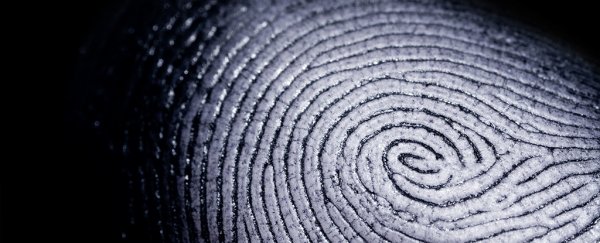If you're a primate or a koala (hello, koala readers!), you have something different compared to other animals: fingerprints. Now, a new study explains how our fingerprints help us keep a grip on the surfaces that we come into contact with – and it's all to do with regulating moisture.
Until now, it's not been fully clear how fingerprint ridges, and the higher density of sweat glands underneath them, actually help us. Researchers decided to investigate this using advanced laser imaging technology and discovered a finely tuned system controlling how wet or dry our fingertips are.
That means our fingers are able to react to the various types of surfaces they're pushed up against, making the grip as strong as possible with everything from a phone to an umbrella, and preventing 'catastrophic slip' where we lose hold of objects.
"Primates have evolved epidermal ridges on their hands and feet," says chemical engineer Mike Adams from the University of Birmingham in the UK. "During contact with solid objects, fingerprint ridges are important for grip and precision manipulation.
"They regulate moisture levels from external sources or the sweat pores, so that friction is maximised and we avoid catastrophic slip and keep hold of that smartphone."
Close-up laser imaging of six male volunteers touching glass showed that when fingertips make contact with hard, impermeable surfaces, extra moisture is released to increase friction and grip. However, the sweat pores are eventually blocked off to avoid contacts that are too slippery.
This sweat-pore-blocking technique is combined with an accelerated evaporation process, controlled by the ridges of the fingerprint, that comes into play when excessive moisture needs to be removed – again, with the ultimate aim of keeping a strong contact between finger and object.
Working together, the two biological mechanisms are able to adapt to surfaces whether our fingers are originally wet or dry: They provide the keratin skin layer with just the right amount of hydration. That gives us skills that smooth-handed and smooth-footed animals don't have.
"This dual-mechanism for managing moisture has provided primates with an evolutionary advantage in dry and wet conditions – giving them manipulative and locomotive abilities not available to other animals, such as bears and big cats," says Adams.
Fingerprint ridges have long been linked to better grip, and previous studies have looked at variations in moisture, but now we know much more about the system that's regulating how our fingers control that flow of moisture – particularly when it comes to touching hard, smooth surfaces.
Besides telling us more about the human body, the research is likely to help product designers who need to design a gadget that humans need to interact with, such as a smartphone, for example.
Further down the line, the findings might even benefit the development of grip on prosthetic limbs and robotic equipment, as well as devices that are used to explore virtual reality environments (where the sensation of touch might need to be simulated).
"Understanding the influence of finger pad friction will help us to develop more realistic tactile sensors," says Adams. "For example, applications in robotics and prosthetics and haptic feedback systems for touchscreens and virtual reality environments."
The research has been published in PNAS.
